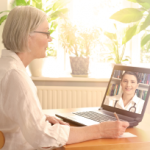Telemedicine, as a whole, can cause issues, too. Families without the previous experience or technical skills may not know what options are available, face difficulties with installing and using software, and require more upfront support to prepare for the visit. Distrust of technology and health care in general could also reduce their likelihood of using telemedicine.
“Inequity is a fundamental part of our society that is always important to discuss,” Dr. Katzow says. “COVID-19 just happens to be focusing the public eye on some of the concrete ways in which societal injustice impacts health outcomes.”
The pandemic itself has also disproportionately affected ethnic and racial minorities. At Massachusetts General Hospital, for instance, about 35% of the COVID-19 patients are Hispanic, as compared with 9% of the hospital’s patient population before the pandemic, says Jacques Ambrose, MD, of Harvard University, Boston. Dr. Ambrose is the author of a separate perspective piece in Pediatrics about inequities during the pandemic.2
Families may have limited English proficiency, as well as underlying conditions such as asthma and obesity that lead to severe COVID-19 infections. They’ve also lost access to structural resources, such as free-and-reduced lunches and school support services.
“During this crisis, people everywhere are hurting from many losses: loss of life, loss of community connections, loss of employment, and loss of stability and normalcy,” he tells Reuters Health. “To better understand inequity, we need to ask why minority communities and people are hurting and losing more. Minority children are potentially losing their education, their food and housing, and even their parents and communities.”
References
- Katzow MW, Steinway C, Jan S. Telemedicine and health disparities during COVID-19. Pediatrics. 2020 Aug;146(2):e20201586.
- Ambrose AJH. Inequities during COVID-19. Pediatrics. 2020 Aug;146(2):e20201501.



